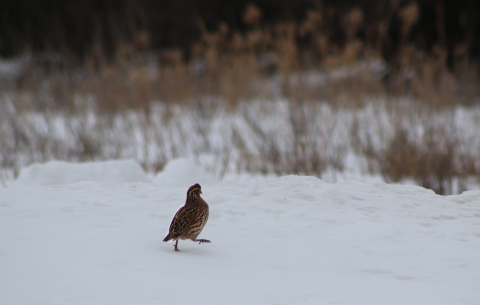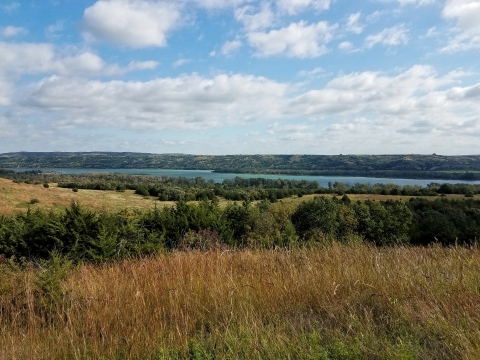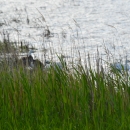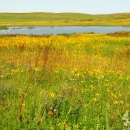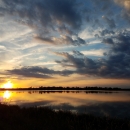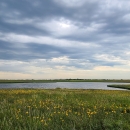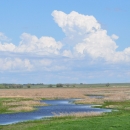About Us
Located along the Missouri River below Fort Randall Dam, Karl E. Mundt National Wildlife Refuge is managed to provide habitat for bald eagles. Today, the Refuge protects one of the last remnants of natural habitat along the Missouri River, and it benefits more than bald eagles.
During spring and summer, the woods are alive with the calls, songs, and striking colors of woodland birds. Blue jays, cardinals, orioles, phoebes, wood peewees, warblers, grosbeaks, woodpeckers, and cuckoos dart through the treetops. Bobwhites and wild turkeys stalk the forest edges.
To protect the eagles from disturbance, the Refuge itself is closed to visitors. However, interpretive panels located on Eagle Drive provide information about the Refuge as well as provides a great wildlife overlook.
Our Mission
Each unit of the National Wildlife Refuge System is established to serve a statutory purpose that targets the conservation of native species dependent on its lands and waters. All activities on those acres are reviewed for compatibility with this statutory purpose.
Our History
In early times, eagles perched in timber which was found along the Missouri River. The wild river and its surrounding habitats yielded fish, waterfowl and other wildlife which were preyed upon by eagles. Construction of dams converted the wild river into open lakes and destroyed the eagles' habitat.
Forced from their traditional haunts, the eagles searched for alternate wintering areas and some found the tail waters below the Fort Randall Dam. In this open water, they found an abundance of their favorite food - fish such as goldeye, shad and white bass plus a variety of ducks and geese.
The eagles found excellent stands of mature cottonwood trees adjacent to the open water. This combination of abundant food and ideal roosting habitat proved successful and wintering eagle populations began to increase below the Fort Randall Dam. In 1967, a peak of 283 eagles was reached establishing the Fort Randall population of wintering eagles as the largest in the lower 48 states.
Although a portion of the wintering eagle flock roosted in woodlands managed by the U.S. Corps of Engineers, the main roosting areas were on private lands below Fort Randall Dam. In order to preserve this National treasure, a project was launched by the 7-Eleven Food Stores Division of the Southland Corporation and the National Wildlife Federation.
Receipts generated by the sale of endangered species drinking cups were set aside in the "Save A Living Thing Project." The Southland Corporation raised $250,000 which was transferred to the National Wildlife Federation. With these funds, the Federation purchased 780 acres of important woodlands. Administration of the land was turned over to the U.S. Fish and Wildlife Service on December 19, 1974. The new refuge was named after the late Karl E. Mundt, a South Dakota Senator who was a strong supporter of the Endangered Species Act of 1966 and the first national wildlife refuge national wildlife refuge
A national wildlife refuge is typically a contiguous area of land and water managed by the U.S. Fish and Wildlife Service for the conservation and, where appropriate, restoration of fish, wildlife and plant resources and their habitats for the benefit of present and future generations of Americans.
Learn more about national wildlife refuge for bald eagles was established.



